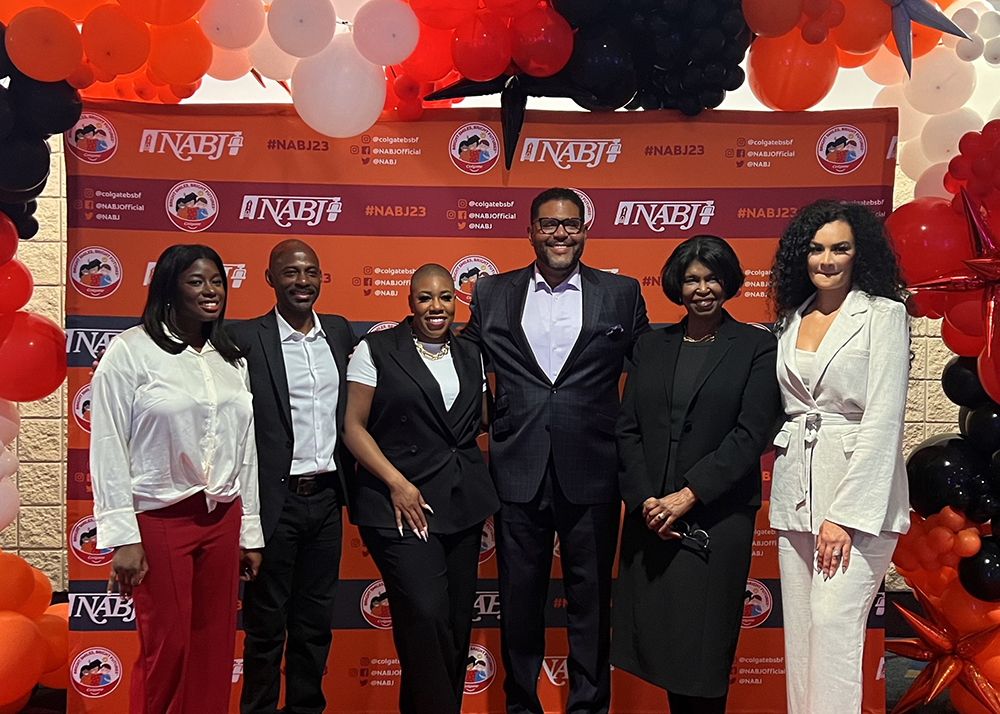The challenge of addressing the needs of patients with sickle cell disease (SCD) includes a constant struggle to increase awareness and research, said panelists meeting Aug. 3 at the National Association of Black Journalists Convention in Birmingham AL.
“Sickle cell disease, it’s a rare disorder. It primarily affects Black folks, those of African ancestry. Historically, the facts are that sickle cell disease has largely been ignored. It’s largely been underfunded, understudied, undertreated,” said panel moderator Symone Sanders-Townsend, the former political strategist who now has her own news show on MSNBC.
“More is known now than ever actually about sickle cell disease, about care. But the community still experiences bias and health literacy challenges when accessing care,” Sanders-Townsend said.
Panelists spoke of the need to treat ignorance of sickle cell disease as a challenge to equity.
“If people aren’t listening to something that only affects predominantly people of color, specifically Black people—if they’re not listening to that conversation—then it really reflects on all of us as a community,” said Akilah Coleman, a sickle cell advocate, caregiver and philanthropist. “We really need to hone in on that, so that we can level the playing field and give them (SCD patients) a voice. Give them a face.”
The panel, sponsored by Pfizer, consisted of three women who described their challenging professional and personal journeys with confronting SCD.
Helping speed the slow pace of drug development
Frustration with a lack of a cure lead to a career in biopharma for Dr. Kim Smith-Whitley, Pfizer’s Advisor of Scientific and Clinical Affairs. Whitley was formerly Executive Vice President and Head of Research and Development at Global Blood Therapeutics (GBT), a company pioneering SCD treatments that was bought by Pfizer. Before that, she saw patients as a doctor.
Dr. Smith-Whitley said she cared for young people with SCD for 30 years as head of the Sickle Cell Center in the Children’s Hospital of Philadelphia before getting into drug development, even though the medical practice was a platform that let her help many people.
“I moved away from that platform because I became frustrated by the few medications and therapies I have to treat this well-deserving community,” she explained. “I really was drawn to drug development because I knew that there were people in the space, that were not only dedicating one medication or two medications, but a pipeline of medications to help those living with sickle cell.”
GBT was developing a pipeline of SCD drugs, and when Pfizer bought the company, they cited the ability to bring these drugs to an underserved community as a motivation for the purchase.
As Dr. Smith-Whitley noted, drug development can involve a lot of near misses before researchers achieve success. “It really takes a company that’s committed to getting those molecules over time into clinical trials, so that we know that it’s safe, that it’s impactful and effective. Then we can broaden it to the sickle cell community. One of the things that we’ve heard about is that there are medications out there, where there’s a medication that was repurposed for sickle cell, a chemotherapeutic agent that is noted to be the standard of care.”
A family affair
Coleman, the advocate and caregiver, said she was born with the sickle cell trait, the genetic precondition for SCD, but she has been fortunate enough to avoid symptoms. Her husband and daughter, however, not only have the trait, but also the symptoms. She introduced her husband, NFL star running back Tevin Coleman, who was in the audience.
Ignorance about a disease that mostly impacts Black people meant that Tevin Coleman’s SCD went undiagnosed for much of his college career, even though he sometimes passed out on the field from the symptoms. Finally a Black coach in college told Tevin Coleman about sickle cell disease and he had it tested.
“That coach then helped him create a care plan, helped him to know how to identify it. I want to point out Dr. Kim, because this is why it’s so important to have people that look like us, that can advocate for us,” Akilah Coleman said. “Had my husband not had that coach, he wouldn’t be the elite athlete he is today. He had someone that advocated for him and spoke up for him. When he would get exhausted, tired, and needed an IV or whatever it was that he needed, if he needed to take a break, he wasn’t looked at as if he was lazy. He had someone that advocated for him that looked like him and he is still here today.”
The Coleman’s daughter, who is just starting kindergarten this year, “experiences pain in her hands, her toes, her legs.” As Akilah Coleman explained, this means its essential to make their daughter aware of her own condition and make sure she feels comfortable with talking about it when symptoms arise. She needs to tell people who may not be aware about the condition.
“Our sickle cell journey is really ongoing and it’s constantly evolving and changing. This isn’t a one size fits all. This isn’t what works for one patient, works for the other. All the signs and symptoms, you can’t always see them. For her, we really work on her identifying what she’s feeling and knowing how to express that for us, and just finding that right care plan for her.”
The challenge of maternity
For Teonna Woolford, co-founder and CEO of Sickle Cell Reproductive Health Education Directive, her SCD journey became more difficult in high school, when she happened to be going to a predominantly white school where they were “unapologetic” about not understanding the disease. “That’s when things really started spiraling out of control. I would say that I missed 80% of my junior year of high school, 60% of my senior year in high school,” she said.
Then she asked a doctor about the possibility of having children and discovered that there was little information or support for sickle cell patients. Cancer patients could get financial assistance for freezing their eggs, but this help was not available for sickle cell patients.
The more she looked into the situation, the more Woolford understood the special challenges of SCD for women who want to be mothers.
“I’ve talked to so many women who feel like their doctors are pressuring them to get their tubes tied, to get hysterectomies,” Woolford said. “Because for the longest time, there was this misconception that women with sickle cell couldn’t get pregnant or should not get pregnant.”
Woolford’s organization works to improve the situation of would-be mothers with SCD. She said their current policy efforts revolve around getting Medicaid to cover access to fertility preservation for sickle cell patients. “Over 60% of individuals with sickle cell are on Medicaid,” Woolford explained. “We’ve started having some early conversations, but it’s definitely an uphill battle.”




